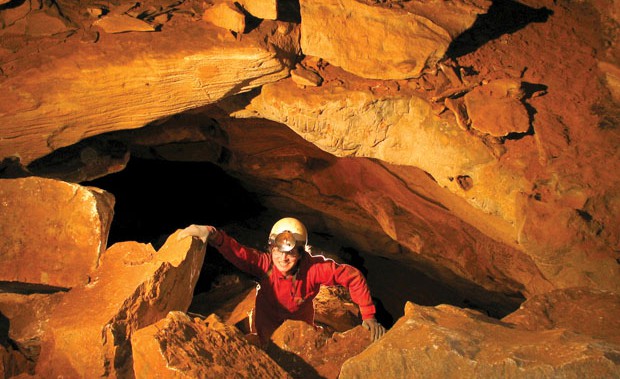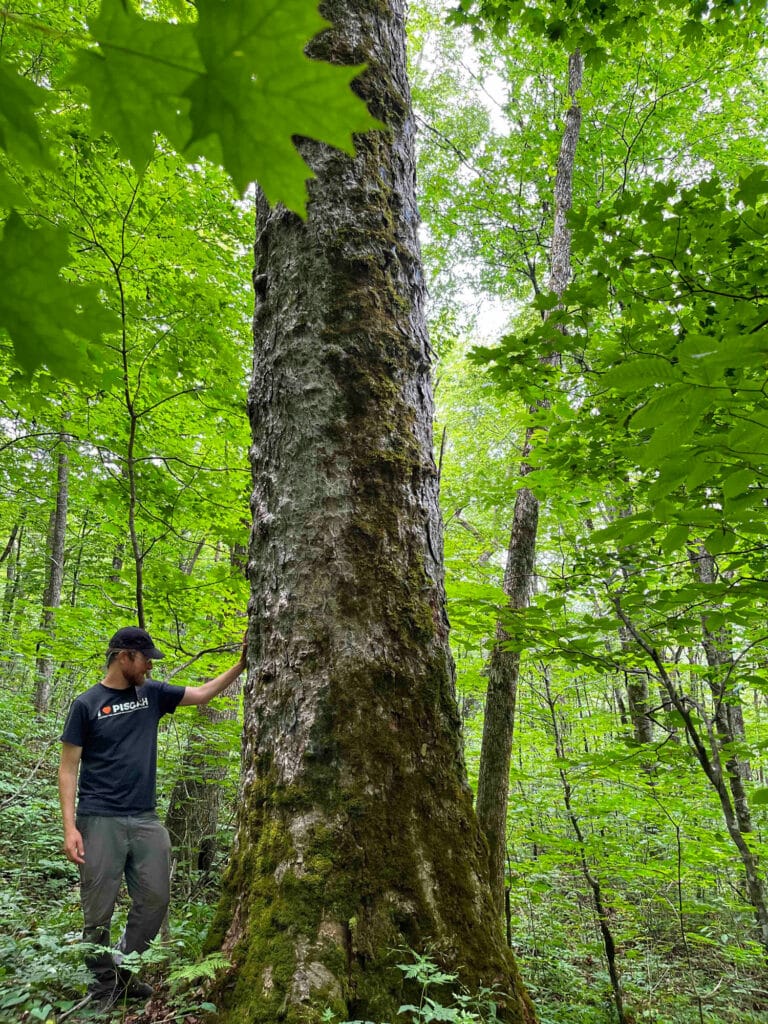To survey the cave, spelunkers take measurements of distances and angles, create scale sketches of what they see, and take notes on biological and geological information. They plot the cave’s streams, mineral formations, airflows, and where people have been in the cave in the past.
In 1999, Toomey, along with park scientists and volunteer cavers, was examining the paleontological remains of animals that had used the cave. He and his colleagues were searching for tiny bones, bat guano, and raccoon scat under rocks and inside crevices. Suddenly, they found a spot along a cave wall where they could feel air coming out.
That hole led to a 1,000-foot-long passageway that no one at the park had ever seen before.
“This passage was only 30 seconds off of the tour trail tourists have been following since the early 1800s,” Toomey recalls.
Upon entering the dark passage, they discovered that no person had set foot there in at least 1,000 years.
It became apparent that there were Native American artifacts in this passage, including torch fragments and pieces of digging sticks. Yet, unlike the other 12 miles of cave known to have been first discovered by Native Americans, this route had no traces of use by any Europeans or African Americans from the 1700s or 1800s.
The rediscovery of this new stretch of Mammoth Cave paved the way for a current study headed up by archaeologist George Crothers of the University of Kentucky. Crothers seeks to better understand the Native American community that lived in this region. For instance, the existence of rock cairns in this passageway reveals that it was the Native Americans, not the Europeans, who built cairns in other parts of the park. It’s not yet clear, according to Toomey, what they used the rock cairns for.
Caving for Nature
Exploration has also made biological studies possible. There are currently three different studies on bats, for example, being conducted at Mammoth Cave National Park. One is focused on White Nose Syndrome, a disease that is wiping out bats across the eastern U.S. Other studies are looking at the hibernation of big-eared bats; how wildfires affect bats’ underground foraging; and the genetics of cave fish.
Caves are very fragile environments. They aren’t accustomed to disturbances like natural disasters. Nor do they have many large animals inhabiting them. Caves are low-energy environments with organisms that have long lives, slow metabolisms, and slow reproduction rates.








